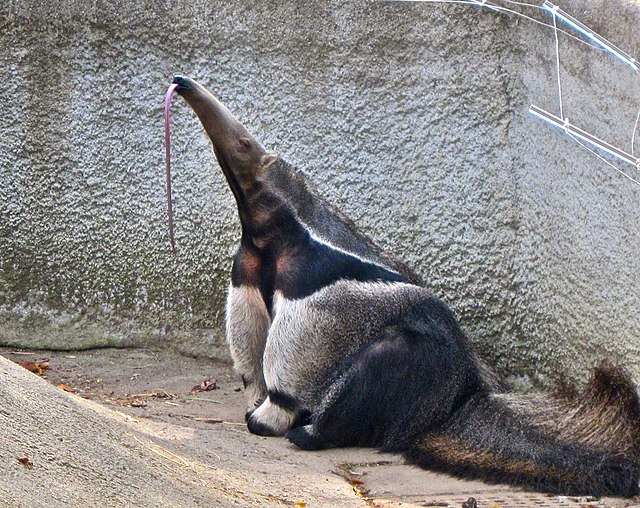The giant anteater is an insectivorous mammal native to Central and South America. It is one of four living species of anteaters, of which it is the largest member. The only extant member of the genus Myrmecophaga, it is classified with sloths in the order Pilosa. This species is mostly terrestrial, in contrast to other living anteaters and sloths, which are arboreal or semiarboreal. The giant anteater is 182 to 217 cm in length, with weights of 33 to 50 kg for males and 27 to 47 kg for females. It is recognizable by its elongated snout, bushy tail, long fore claws, and distinctively colored pelage.
Giant anteater
Side view
Mounted skeleton
Anteater with tongue extended
An insectivore is a carnivorous animal or plant that eats insects. An alternative term is entomophage, which can also refer to the human practice of eating insects.
This aardwolf skull exhibits greatly reduced molars and carnassials teeth as they are unnecessary for any large, insectivorous animal subsisting on soft insects such as termites. The dentition of a shrew is very different. The aardwolf uses its canine teeth in self-defence (and, occasionally, in digging[citation needed]); accordingly, the canines have not been greatly reduced.
A robber fly eating a hoverfly
The giant anteater, a large insectivorous mammal
Drosera species







